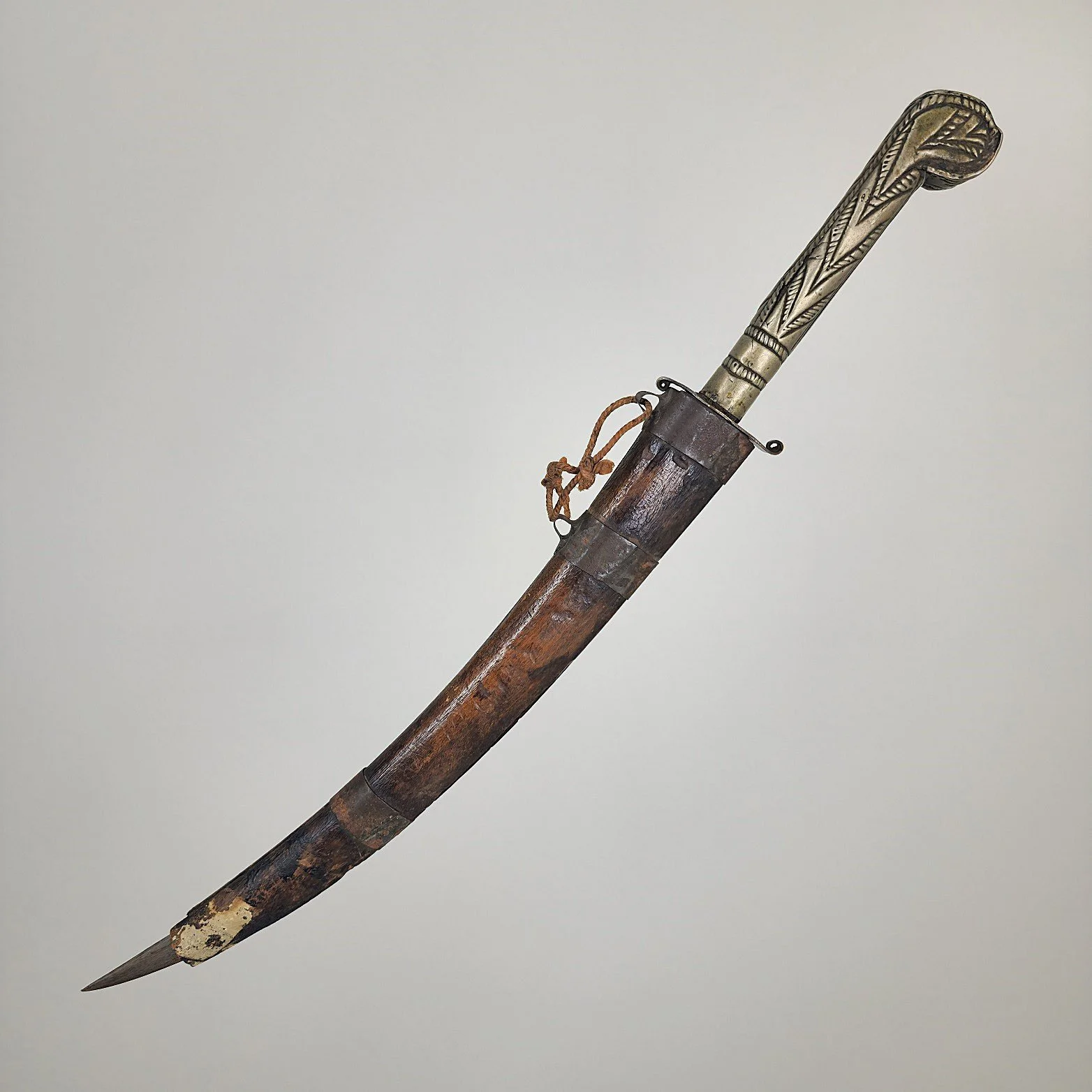Flyssa (Flissa) Knife
Flyssa (Flissa) Knife
Iflissen Lebhar Tribal Confederacy
Algiers - Kabylia, French Algeria (Algeria)
Mid- 19th century (ca. 1865)
Steel, brass, wood, iron, twine
Blade: 25,4cm
Hilt & Blade: 35,6cm
Hilt, Blade, Sheath: 35,6cm
Collection Date: 2016
Collection Number: 6
Ex. American Art Market(2016)
The flissa is the traditional weapon of the Iflissen Kabyles, an ethnic Berber group originating from the Atlas Mountain Range in Northern Algeria. Their weapons range from small knives to very long swords, most of which are very consistent in design using brass inlays and geometric motifs.
This example has the style hilt heavily influenced by Ottoman Balkan bichaq knives, presumed to be made in Algiers by a Kabyle craftsman. The upcurved single- edged steel blade is decorated in traditional Kabyle brass inlays of scrollwork and geometric designs for almost the entirety of the blade. The hilt of wood covered in a brass- silver sheet embossed with linear and geometrical patterns. The rounded pommel is reminiscent of Ottoman Balkan arms such as the bichaq. Brass S- shaped cross guard in European fashion. Walnut wood sheath with a series of iron bands, the top band having a twine belt loop. Damage to the tip of the sheath. The upcurved blade is a less common variant. Two very similar examples are dated from circa 1865 and 1867.
The last two photos show a near identical flissa knife held in the hand of a North African Courier in the orientalist diorama titled "Lion Attacking a Dromedary" by Èdouard Verreaux in which he created for the Paris Exposition of 1867. The diorama is housed at the Carnegie Museum of Natural History in Pittsburgh, Pennsylvania.
[1] Claude, Eric. 2020. “The Small Catalog of Moroccan and Algerian Edged Weapons”. Page 235
[2] Spring, Christopher. 1993. “African Arms and Armor”. Pages 21 -24
[3] The Carnegie Museum of Natural History housed a diorama, “Lion Attacking a Dromedary” by Édouard Verreaux, which has an almost identical upcurving Flissa dagger built for the Paris Exposition of 1867.
[4] https://www.britishmuseum.org/collection/object/E_Af-3817-a (1865)
[5] http://www.oriental-arms.co.il/item.php?id=6583
[6] http://www.oriental-arms.co.il/item.php?id=3646
[7] http://www.oriental-arms.co.il/item.php?id=522
[8] https://africanarms.com/gallery.html?6-flyssa-sabre-86-5-cm














